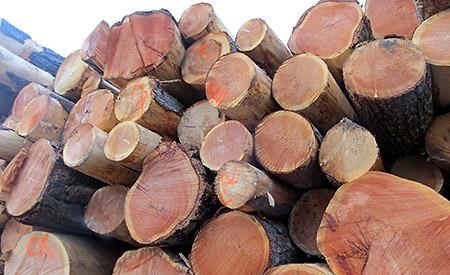While the fight for Powell River’s forests may have gone quiet over the summer, conservationists say they expect it to heat up come fall.
That is why they invited Ken Wu, director of Ancient Forest Alliance (AFA), to speak on what has worked to protect land in other BC communities.
More than 50 people gathered at Powell River United Church on Thursday evening, July 23, to hear Wu speak and brainstorm ideas.
“One of the most important things to do is get on the ground and get good photos,” Wu said, adding that means not just taking ones featuring the area’s most interesting or beautiful places, but also of marked trees and the extent to which harvesting has already taken place. He also advocated spending money on aerial photos taken from plane or drone. “So then when you send a news release about an endangered area, it’s not just an image of protestors, or your talking head, but awesome images of the forest so people know what it is really about—what’s actually at stake.”
Giving areas memorable names, ones which evoke connection help in creating public interest. He provided a number of examples of this including Avatar Grove, near Port Renfrew where Canada’s gnarliest tree can be found. He said that at the time filmmaker James Cameron’s summer blockbuster had just come out and its theme was ripe for appropriation.
At first it was local print and television which covered the story, then it was picked up by the national and international outlets. Interest in Avatar Grove snowballed.
The alliance also began taking hikers out to the grove so people could see the trees. “That’s another thing,” he said, “scout out the area in advance to find the best features and then flag a route for people to follow.” The island land was protected in 2012, but Wu said it happened in large part because of support from the local business community and even forest workers. When business owners started to talk about how much their ventures relied on the natural beauty of the area, government paid attention, he added. “It wasn’t the protestors. When you have a right-wing government, it was the business lobby that changed the outcome.”
Although first nations often have their own plans for forests, Wu said that sitting down to talk and finding common ground is crucial, particularly in BC where much of the province remains unceeded.
Bioblitzes are also a tactic that has been extremely useful in past campaigns, Wu said. A bioblitz is a period of intense biological surveying in an attempt to record all living species within a designated area. “It really puts an identity to an area and helps build the case of why it should be saved,” he said. “Very few people are going to say that annihilating species at risk is an environmentally sustainable thing to do.”
For public land, conservations need to build movements and pressure government to take action, but there are fewer options when it comes to privately held land, he said.
“In the vast majority of cases, especially in the North American context where governments do not expropriate private land, if you really want to protect an area, there’s going to be money involved.”
Groups will either need to buy the land or organize a boycott to make the company lose money if they log the area, he said.
But he added communities can fundraise and ramp up pressure on government to help. He said despite the fact that the provincial government has not had a park land acquisition fund since 2008, it has helped buy land since then.
Pressure from company stakeholders can also have an impact. Last summer when Island Timberlands began logging old growth Douglas Fir trees on McLaughlin Ridge near Port Alberni, conservationists called on the BC Teachers’ Federation, which has a large stake in the timber company through its pension fund, to pass a resolution to have the company stop logging there and other sensitive areas.
Wu also touched on work being done on Cortes Island, Port Hardy, Roberts Creek and in Powell River for Stillwater Bluffs.
For more information, readers can visit www.ancientforestalliance.org and www.prforestcoalition.org



